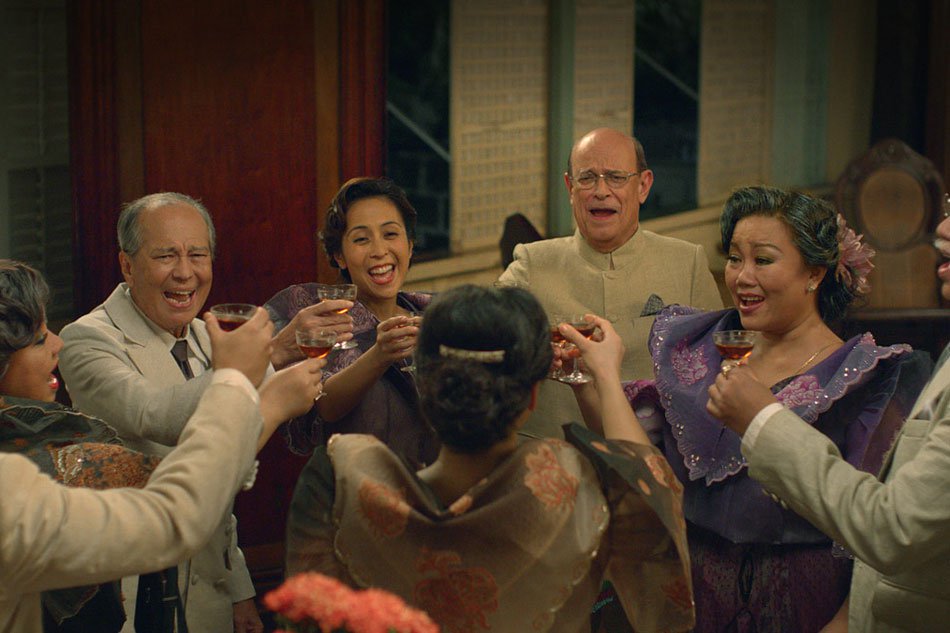Films like Ang Larawan do not come often. A dark horse in this year’s Metro Manila Film Festival (MMFF), this one is a musical culmination of everything beautiful about Old Manila and Filipino theater. Winning Best Picture and several other awards during the MMFF Gabi ng Parangal, the film is based on the quintessential Nick Joaquin play A Portrait of an Artist as Filipino, scored by the acclaimed Ryan Cayabyab, and a libretto by National Artist Rolando Tinio.
It tells the story of two old maids, Candida (Joanna Ampil) and Paula (Rachel Alejandro), who watch their Intramuros home crumble on the eve of World War II. Their father, the famous painter Don Lorenzo Marasigan (Leo Rialp), paints a haunting image of a Greek legend as his self portrait, before an accident leaves him bedridden and incapable of providing for them. The sisters fight for survival, as their selfish siblings try to kick them out of their ancestral home. The painting becomes the source of their conflict as they battle out the ideologies and love they have for the fine arts and the grand ways of the Spanish in the wake of a new era of capitalism and war.
The film opens with a far off look into Old Manila, and the film’s main setting, the Marasigan home. Yet despite the distance in time and space, the script is so eloquent and deft in its ability to portray the vivid and dying world of the artistic and proud Marasigans. Paula and Candida speak with ease and comfort, like sisters do, and they voice their fears and concerns with emphatic articulation. It makes them feel humane, despite being worlds apart from their audiences. If anything bad can be said, it might be that there are times when the prose seems almost as if it’s from a teleserye. Thankfully, the powerful acting of the two lead actresses patches this up nicely.
Using more theatrical techniques, it fits in quite nicely as well to the musical’s origins as a three-act play by Nick Joaquin. The organic chemistry of the cast is vibrant in every scene. Even in the more eccentric scenes, like when Candida insists on making a living off her perceived talent of catching rats, everything still seems natural, and the audience is only reminded how insane this is when questioned by the other actors on screen.
An outstanding performance by Ampil, who won Best Actress, should also be noted for the rawness that she displayed in every scene. Much like a bomb, she was teeming with emotion that was ready to explode at any given moment. However, it was her nuanced depiction of the Filipino character in a public setting that set her apart. It was subtle and brilliant in execution, and an absolute pleasure to watch.
Another standout is Sandino Martin, who plays Bitoy Camacho, an old family friend of the Marasigans. A relatively fresh face among the veterans on screen, Martin stands apart for his youthful vitality.
Paulo Avelino’s cheeky performance as Javier is also noteworthy despite having little to no theatrical or musical training. While his singing is far from perfect, especially when compared to his on-screen companions, he still makes bold choices that set him apart as a maverick on screen.
However, for all of Candida and Paula’s candor, the direction fails to distinguish these two lead characters and develop them individually. While at times there seems to be a reason for this, it was a shame that the direction of the film had not given the cast more chances to explore their characters.
What it tried to do instead was allow the characters to thrive in their own arena. Fantastically choreographed and surreally shot, it used the limited space of the Marasigan home to be a succinct representation of Old Manila. It sets the film’s jaded and haunting tone so well. Even the almost out-of-focus and hazy shots of the film create a dreamlike effect that lends itself to the nostalgia of the film. Precise in its execution, this film takes every shot with not only technical, but also artistic perfection.
The film’s beautiful score, which also won accolades at the MMFF, is translated wonderfully on screen, with the seamless transition between music and dialogue despite being composed to be more like an opera. Particularly, songs such as Kay Sarap ng Buhay Nu’ng Araw and Hindi Simple ang Buhay are performed with such sincerity that audiences are bound to be dumbstruck by its musical quality. Blended excellently into its medium, the musical succeeds immensely, as the songs both advance the story and the building of the world around it.
In totality, this film is a gem for Filipino cinema. It is ambitious in its subject, and was surely a monumental task to undertake. But no matter the odds, it was done with such beauty and elegance. If any film is truly worth seeing for MMFF, it is Ang Larawan. It is a picture of everything Filipino cinema should be, and deserves to be seen by everyone this holiday season.
Featured photo retrieved from kapamilya.com






